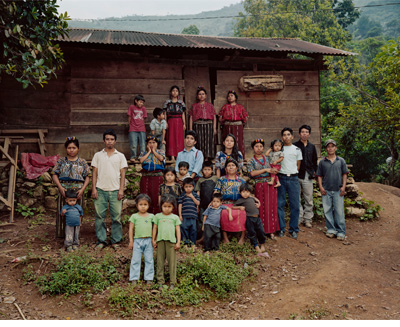
Caba Family Portrait by Dana Lixenberg
![]()

“Sometimes a story told long ago will come back and speak to you in the present.” So begins Pamela Yates’ narration of her new documentary, Granito: How to Nail a Dictator. The line refers to her acclaimed 1983 film, When the Mountains Tremble, which uncovered the genocide of indigenous (Maya) people in Guatemala. In addition to introducing the world to Rigoberta Menchú, a young Maya exile who served as the film’s storyteller and who would go on to win the Nobel Peace Prize and run for president of Guatemala, the earlier film included footage that eventually became evidence against the military dictatorship responsible for the killings.
Filmed 20-odd years after When the Mountains Tremble won the Special Jury Award at the Sundance Festival, Granito: How to Nail a Dictator is the story of the efforts to bring General Ríos Montt and his cronies to justice. In 2003 Yates was approached by lawyers orchestrating the genocide case initiated by Menchú. Their quest for more evidence prompted Yates to exhume unused footage from her previous film. She found herself reliving that earlier time when, as a young filmmaker, she gained the trust of both Guatemalan Army generals and young indigenous guerillas, as well as survivors of the killings. Granito features several of these characters then and now, and follows the genocide case’s progress as it reaches the Spanish Criminal Court. The film is both important historical document and history-making in itself.




 Facebook
Facebook Permalink
Permalink Digg
Digg Reddit
Reddit LinkedIn
LinkedIn StumbleUpon
StumbleUpon Tumblr
Tumblr

